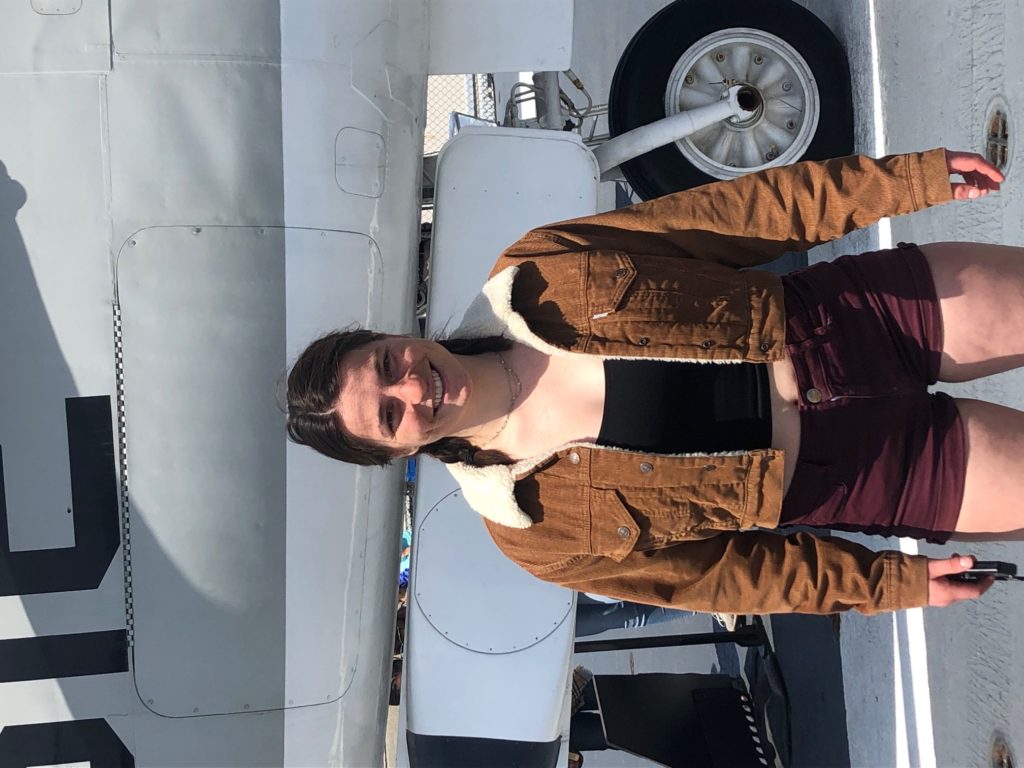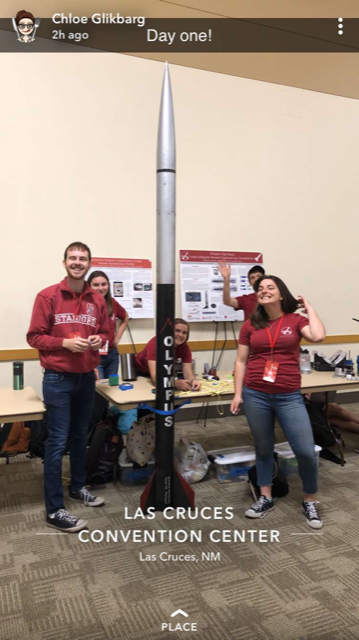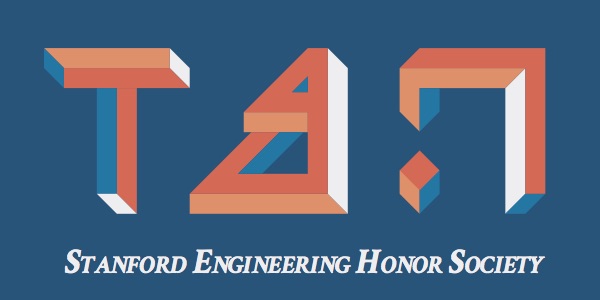By Kathleen Mhatre, Junior, Mechanical Engineering

Why did you choose to be an engineer?
My favorite part of high school was being part of the FRC team at my school, so becoming an engineer felt like the way to go.

“Next up on the pad is Project Olympus from Stanford University” the announcers voice echoed over the speaker. This is it, I thought, this is what we have been working for all year. The many seven hour drives to launch sites, the early mornings spent integrating the rocket, the late nights laying up fins and attaching them to the airframe, all the various flight simulations, and the endless documentation, it was all leading up to our launch at the Intercollegiate Rocket Engineering Competition (IREC). After spending the previous week driving all or rocket parts from Stanford to New Mexico, we had woken up early that morning in our Airbnb just outside of Las Cruces, New Mexico. We loaded our airframes, avionics system, recovery system, and payload into the cars along with all or tents, tables and tools and drove the final hour out to the Spaceport. We arrived at the launch site at 6am, just as the sun was rising. We unloaded the cars, set up our tents and tables, and started our final integration of the rocket. There were a couple hiccups, as there always are. One of the glue joints on the payload broke, so our payload team had to run back to the car, plug in the inverter, and hope the hot glue would hold. The avionics had some trouble bolting into the nose cone, our structures lead had to put some extra epoxy on the fins, and of course the scale was out of batteries so we had to borrow another team scale in order to weigh the final rocket and run final simulations checks.
By early afternoon we were ready to go. We got the judges check-off and head out to the launch pad, located a couple hundred yards away from the integration site, along with nine other teams. We were part of the second set of teams to launch that day, making it one of our speediest launch day integrations by far. After all the teams had their rockets upright on the pads, we went back to the site and waited anxiously to launch. We were the sixth rocket in the group. Five others went up and came back down with varying degrees of success and then “next up on the pad is Project Olympus from Stanford University,” the announcers voice rang out, “launching in five, four, three, two, one.” I held my breath as we waited for the igniter to go off and send our rocket skywards. One, two, I counted in my head, on three it went. Up, straight up, a beautiful launch, the sound of the motor getting louder and louder as the rocket gained speed, until oh-no, it jerked sideways, then it was pointed sideways, then falling, falling with no parachutes, having reached maybe a tenth of the intended altitude. We watched the project we had been working on all year fall from the sky, towards imminent destruction, and there was nothing we could do. Recovering the remains was quick. The rocket had not gone very far, and it did not separate so it was mostly in one place. That’s also when we learned why it failed – the fins. They hadn’t been attached properly and the last-minute layer of epoxy was not enough. When the rocket hit Mach, the tip-to-tip layers delaminated, leaving only a small layer of JB weld holding each fin on. The first one to fall off caused the jerk, breaking the avionics bay and quickly leading to the other two fins falling off as well.
The hour long drive back to the Airbnb was one hardest hours I’ve spent in a car, but by the time we arrived we were already discussing how to make the rocket better and prevent a failure like this in the future. Though the competition for that year was over, one thing was abundantly clear, we were not going to give up. We were going to take everything we learned that year and use it to build an even better rocket, to win the freaking competition the next year. Some truly innovative design ideas came out of those discussions, some of which even helped shape our rocket design for the next year. That’s when I realized this failure did not make us bad engineers. It was an opportunity for us to learn and grow both in our skills as engineers, but also as a team. I love how working on challenging projects pushes you farther than you think you can go, but you do not have to do it alone. It’s a collaborative experience, which has been one of my favorite things about studying Mechanical Engineering.
